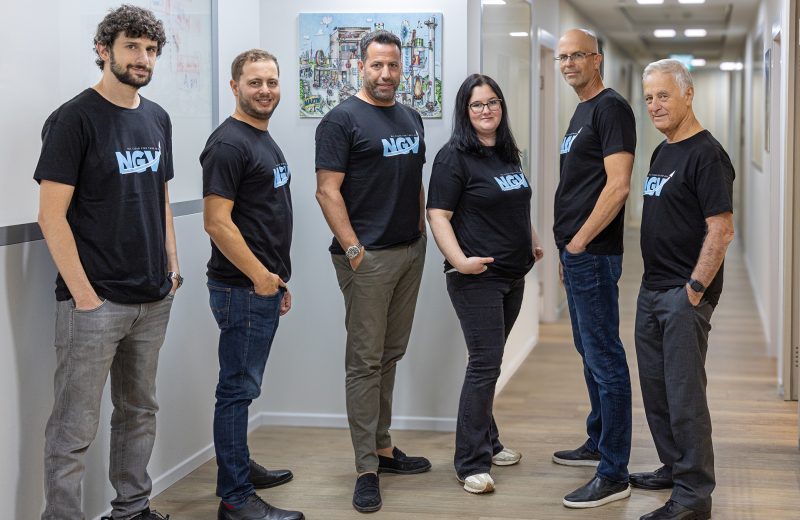Israeli startup flips SAF’s hydrogen problem on its head

Hydrogen was the first element in the universe. It is also the simplest – with its isotope protium having a single proton and an electron. But try storing hydrogen and it becomes a significant challenge due to its low volumetric energy density, need for extreme pressures or cryogenic temperatures.
But hydrogen is key to producing sustainable aviation fuel (SAF). Simply put, hydrogen removes oxygen from feedstocks to refine fuel molecules working as a critical reactive agents for conversion and synthesis.
Almost all the feedstocks used to produce SAF are carbon rich and oxygenated. Converting these to molecules for SAF through most of the approved pathways requires hydrogen. This means producers must invest in expensive preprocessing steps – read higher capital expenditure.
But enter Israeli startup NGV. Founded by entrepreneur Arie Sussely, the company says rather than fighting the low hydrogen-to-carbon ratio of waste streams, it has engineered their entire production process around it.
“Our technology is specifically designed to work with lean hydrogen feedstocks, where the ratio of hydrogen to carbon is low,” explains Tomy Hos, NGV’s chief technology officer. “This includes feedstocks like CO2, gasified biomass and biogas, all of which produce syngas which typically have a low hydrogen to carbon ratio.”
NGV’s technological breakthrough lies in its novel iron catalyst system, developed over a decade by professor Moti Herskowitz, former senior adviser to ExxonMobil. “Our Fe-spinel catalyst, prepared commercially by one of the leading catalyst companies, was successfully tested for over 3,000 hours at a small pilot scale, yielding excellent results in terms of activity and selectivity to [produce] desired hydrocarbons,” Hos tells us.
The catalyst’s unique properties allow it to “keep a low ratio of H2/CO along the reactor, consequently, produce liquid hydrocarbons with high selectivity, while avoiding undesired reactions such as methanation and the Boudouard reaction.”
The technology’s feedstock-agnostic design represents a fundamental shift in thinking. “The process is specifically designed to work with lean hydrogen feedstocks,” Hos explains. “By leveraging the low hydrogen to carbon ratio, the process can produce hydrocarbons within the desire range of transportation fuels, making it suitable for gasoline, jet and diesel. Additionally, valuable and reactive molecules such as olefins and alcohols can be produced and used as feedstock for high-value green products.”
This approach eliminates multiple costly operational units that plague conventional SAF production. “The process eliminates several operational units, uses water efficiently and has a longer catalyst lifespan, resulting in significant cost reductions compared to traditional Fischer-Tropsch technologies,” Hos notes.
The efficiency gains are also substantial. NGV claims its solution increases productivity by more than 15%, reduces Capex and Opex by more than 25% while simultaneously lowering wastewater generation and steam consumption by 85% and 70% respectively.
At its pilot facility at the Blechner Center, NGV is already producing molecules. The company operates a small pilot plant. “Over 95% of the product falls within the transportation fuel range. 75% of the product is upgraded into SAF,” says Hos, with the SAF produced meeting all ASTM D7566 requirements for aviation use.
NGV’s approach extends beyond just catalyst technology. The company has signed a joint venture agreement with Hadean, a leading provider of high-temperature electrolyser technology. The agreement will support NGV’s integrated solution for the efficient production of eSAF through the direct conversion of CO2.
Backed by solid technical validation, NGV is now focused on scaling. “The company is currently raising $5m in capital to build a demonstration plant,” says NGV chief executive officer Arie Sussely, using “biogas from landfills as feedstock for the process.”
Sussely says he is looking for industry partnerships. “The flexibility of collaboration across various feedstocks and stakeholders to accelerate SAF deployment. Strategic alliances within the value chain with partners such as waste management companies, airlines and fuel manufacturers can help secure feedstocks and offtaker agreements, facilitating the technology’s market entry,” he explains.
By eliminating the hydrogen penalty that has constrained waste-to-fuel conversion, NGV’s technology could significantly alter the SAF sector’s feedstock equation. Instead of competing for limited hydrogen-rich resources, producers could tap into abundant waste streams that have been waiting for the right technology to unlock their potential.
Subscribe to our free newsletter
For more opinions from SAF Investor, subscribe to our email newsletter.
